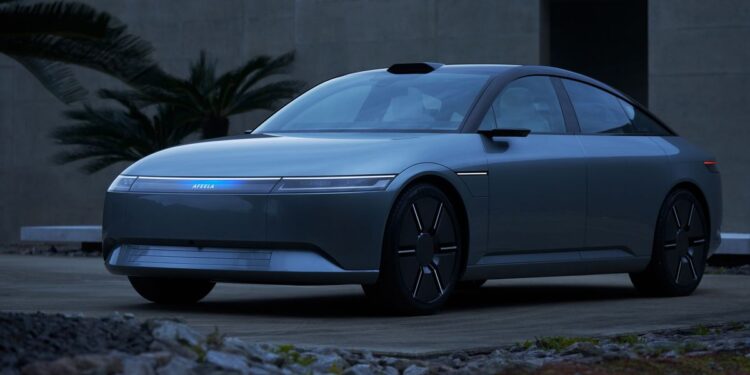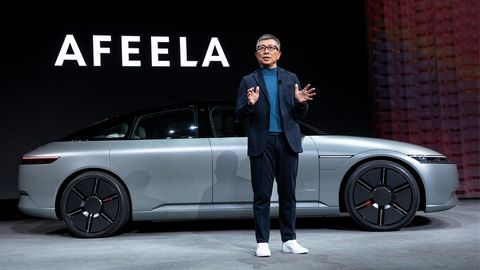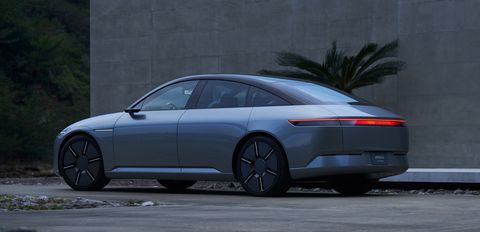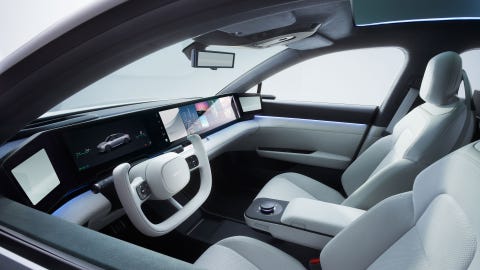- Joining forces with Sony, Honda revealed a new prototype at CES as part of the new Afeela brand joint venture.
- Both the Afeela brand and accompanying prototype are focused on user experience and advancing technology, above the traditional markers of power and performance.
- Autonomous driving capabilities, Qualcomm Technologies’ Snapdragon Digital Chassis, and a “soft cocoon”-like interior will all be included, with the model set for US delivery by 2026.
Honda and Sony say they are teaming up to create the car of the future. Afeela is the brand name, designated as a company that represents “feel,” and we can expect the joint-venture electric vehicle from Honda and Sony to arrive in the US by 2026.
Unveiling a prototype at CES with the Afeela name on the hood, the JV brand has now finally come to fruition after years of concepts. The first silhouette of the prototype machine appears as ultramodern, but still in line with current EV design trends.
What sets the new Afeela prototype apart from the traditional automotive market, however, is its approach to mobility. Sony Honda Mobility Inc. CEO Yasuhide Mizuno took the stage at CES to explain the joint company’s ethos, calling for a focus shift from “power and performance to software, networks, and user experiences.” But what exactly does this mean for the model itself?
The initial details of the Afeela prototype are focused entirely on design, with no pricing or power figures to be seen. In spite of this, the design aspects are fascinating. For example, the company fit 45 cameras and sensors within the concept vehicle, in addition to its 800 Tera Operation Per Second of maximum computing power for the electronic controller.
The driving experience will be dictated by Qualcomm Technologies’ Snapdragon Digital Chassis, a cloud-connected automotive platform that helps control the chassis dynamics and driver-assistance features.
With this computing power and array of sensors, SAE Level 2 driver assistance will be standard and useable in most situations, including urban and city driving. The company also claims a limited Level 3 autonomous driving system is in the works.
Inside the Afeela prototype is a steering yoke, dash-length screen setup, and open concept center console. A company designer says this creates a “gentle rounded tone” for the cabin, in the hopes that occupants will feel wrapped in a “soft cocoon.” The interior colors were picked with minimal distraction in mind, aiming to make drivers less fatigued.
Other notable features include intuitive navigation through augmented reality and the creation of a model-based video game world with the help of Epic Games. The twisting of reality doesn’t stop there, however, as the company plans to create its own metaverse as well.
Sony Honda Mobility says it will develop a production version of the Afeela. Prospective customers can pre-order the model in the first half of 2025, with delivery slated for spring of 2026.
Sony Honda Mobility isn’t the first brand to take a swing at disrupting the traditional power and performance market with a focus on user experience. Hyundai’s new Ioniq 6 is approaching the market from a similar angle, targeting interior design, lighting, and augmented driver capabilities.
What’s most important to you when buying a car—performance, interior experience, or styling? Please share your preferences in the comments below.












